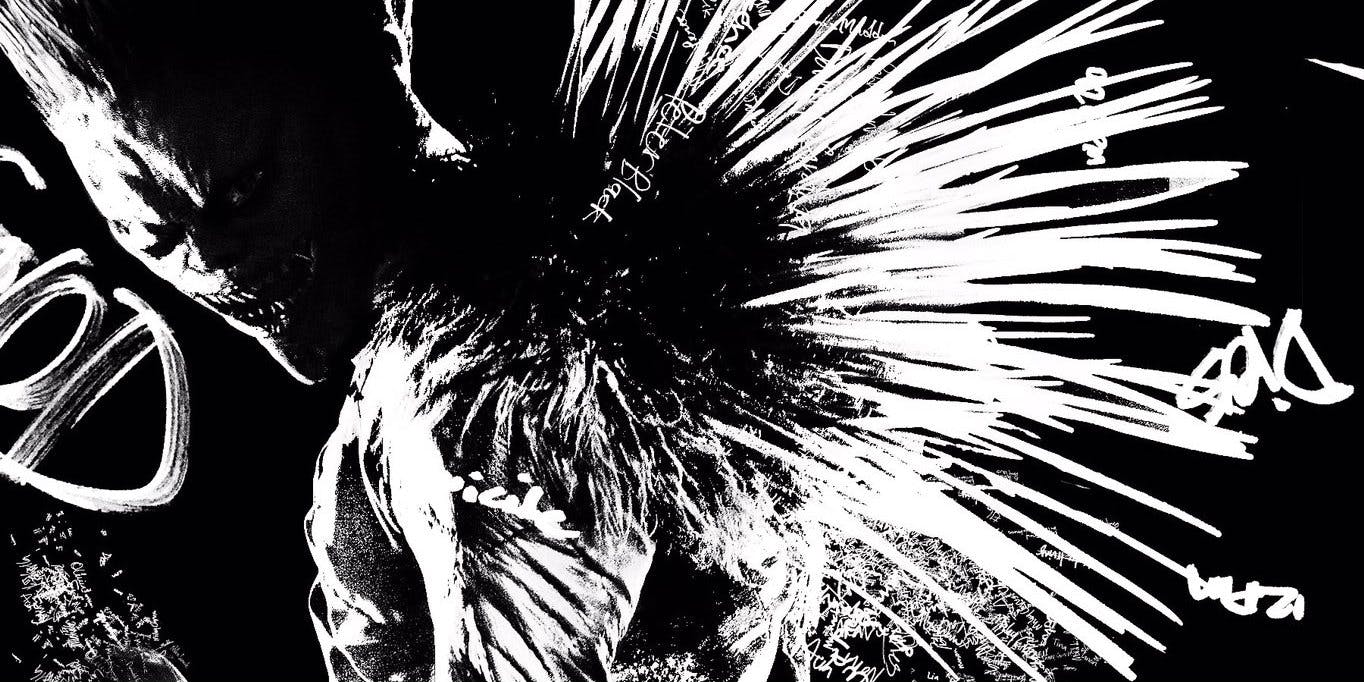[dropcap size=big]N[/dropcap]etflix is cornering the market on some quality programming. Shows like The 100 and Sense 8 are just some of the shows building a bedrock audience. The future of television is here and it comes with cutting visuals, suspense, and captivating storytelling. The recently released Netflix film, Death Note, is its latest American adaption of a popular Japanese Manga serial, and boy was it met with mixed feelings.
What makes Death Note work
The film’s strength lies in building on the source material without going overly in depth. Instead it relies on grounding the film on its core concepts and simplifying the plot just enough to engage.
Fans of the anime series have blasted it for leaving out so much material. But I think a lot of the complaints are unwarranted. I’m a fan of Full Metal Alchemist and wasn’t sold on the teasers for the live action film, but that doesn’t mean the movie won’t be any good. Sometimes an adaption can actually work if we don’t get too serious. We don’t need to over-think the series or the hundreds of episodes that came before it.
By cutting out large chunks of the backstory and mythology, Death Note’s not entirely beholden to the original work. This gives us a fresh representation of a first-encounter creature feature. It also tactfully keeps the story in the hands of a young teenager, who’s suffered the pain of his mother’s death and is one of those loner students so many of us can relate to. Doing this enables us to see how the vulnerable side of human nature can be tested by the lure of power.
After giving the film a shot (did you make it past Nat Wolff’s laughable screams?), Death Note can still be spared some of the major disdain aimed at it. The film’s strength lies in building on the source material without going overly in depth. Instead it relies on grounding the film on its core concepts and simplifying the plot just enough to engage.
Just enough monster
The film doesn’t wear out its main villain. Beyond the Death Note’s supernatural capabilities, its Ryuk, the oni-styled Shinigami that everyone wants to see and it took two actors to fill that role. But William Defoe is the one who really brought it to life through his cackling, maniacal voice and facial expressions, giving Ryuk great presence.
At first it comes across as an anticlimactic, we want to see what the Death God is capable of (it’s why many are still captivated by Pennywise the Dancing Clown and the indestructible Michael Myers), but this works by not tipping the scales of control too much in the antagonist’s favor.
However, for the majority of the film’s run time, the demi-god is kept in the dark. Using his cunning and whispering from the shadows, hardly ever featuring in any direct action. At first it comes across as an anticlimactic, we want to see what the Death God is capable of (it’s why many are still captivated by Pennywise the Dancing Clown and the indestructible Michael Myers), but this works by not tipping the scales of control too much in the antagonist’s favor. If the god were to be unleashed to command his own desires, he’d be in every scene creating chaos, but instead its through Ryuk’s passivity that tension is created and brings an ominous edge to every action he does take.
Simple plots leave room for great dramatics
Taking the film down to bare essentials was a move in the right direction. Absolutely, we shouldn’t sacrifice story and good plots just to make sensational movies. Have you ever seen Momento or Donny Darko? — they had great plots even though they can be confusing, but you can just as easily go overboard with it. I’m still dissatisfied with the cyclical birth-death ending reveal of 12 Monkeys which they kinda did again in Looper. Films can make a great impact if they go the other way and simplify things down to just a couple of simple plot lines.
I’m still dissatisfied with the cyclical birth-death ending reveal of 12 Monkeys which they kinda did again in Looper. Films can make a great impact if they go the other way and simplify things down to just a couple of simple plot lines.
One angle the film focuses on is the spectacle of the ‘fallen man.’ This concept has always fascinated people. We watch while the character’s world goes to hell. In that regard, Death Note doesn’t disappoint. The moral compass is quickly discarded by the two ‘Bonnie & Clyde’ teenage lovers who learn that they have a Death God at their command. They believe that they are dispensing some kind of righteous justice, but they are quick to learn that they’re just tools for the Death God’s malicious schemes.
The main plot develops the story through a second simple premise. An unknown criminal is responsible for hundreds of deaths. He goes by the avenging antihero alias ‘Kira,’ a Japanese romanticisation of the English word for killer, and while he has support for cleaning up society’s rejects, there are many that want to see the end of his string of murders. It adds a thriller-crime dimension to already great fantasy.
Effective grounding makes the movie
Lakeith Stanfield’s performance is what adds the greatest depth to the film. And its through his emotional sensitivities that the film is effectively grounded.
Lakeith Stanfield’s performance is what adds the greatest depth to the film. And its through his emotional sensitivities that the film is effectively grounded. As the story unfolds, ‘L’ feels the weight of the increasing threat and fears for his life. His gradual loss of control and self assurance projects a vulnerability that connects with us. It shows what it must feel like to be up against the kind of sociopathic person that’s capable of killing hundreds. There’s a grim futility in his realization that he might just be Kira’s next kill.
The film also centers on Light Turner’s fall from grace. While he began killing for justice, his morality disintegrates in his effort to save himself. When Detective L seeks to reveal his macabre secret, Turner is willing to bend the absolutes of good vs evil as he plots to destroy him. This flips the antagonist-protagonist paradigm; the main character started out as a baby-faced loner against the world, but by the end of the film his selfishness and blood lust make him the enemy, turning L into the good guy that must stop him at all costs.
These are all the elements that I think not only make Netflix’s Death Note adaptation unworthy of all the vitriol and hate hurled its way, but actually worth some appreciation for their admirable job of adapting such tough and beloved source material.




